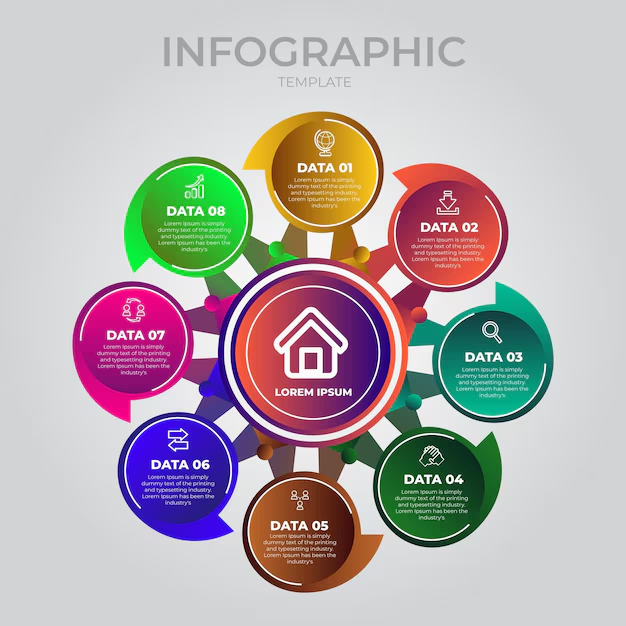22 Jan 2025 | By - Sudha Mariappan

If you own a business, you might have used a ton of strategies to attract customers.
There comes a time when you have to face a critical decision: whether to attract customers organically or try to pull them through cold calling.
While the latter might work if you’re willing to take some risks in your business, this tug-of-war between attracting attention and commanding it can be exhausting.
So, there can be a single solution tied to this; you can have a hybrid approach.
Inbound and Outbound Approach.
What is Inbound Marketing?
Inbound marketing is attracting customers to your business through valuable content and experiences. It is about creating content that addresses the needs and interests of your target audience, drawing them to your website and social media channels. This means creating high-quality content like blog posts, articles, videos, infographics, and webinars that educate and entertain your target audience.
The intention of Inbound Marketing is the development of proper relationships with clients by offering necessary information and, at the same time, promoting authority in a niche. That encourages trust and draws them towards engagement with your brand.
What is Outbound Marketing?
In Outbound Marketing, a different approach is seen, and marketers reach the audience directly.
This would include cold calling, email outreach, direct mail campaigns, and even advertising. This approach would aim to generate leads and sales quickly through direct contact with the customers, often in a call without any previous interaction.
The Limitations of Being Fully Inbound or Outbound
Although Inbound and Outbound Marketing each have their strengths, reliance on one may drastically limit the capabilities of a company to meet its sales and marketing objectives.
Pure Inbound Marketing Pitfalls
Inbound marketing is highly effective in establishing brand awareness and generating organic traffic; however, it has some limitations as well:
- Slower Generation of Leads: The use of organic search and social media may take some time before the positive effects are realized. Building a solid online presence needs continuous content as well as repeated SEO efforts toward building traffic, thus taking time.
- Difficulty in Reaching Decision Makers: Inbound marketing is generally more focused on attracting and engaging a wider audience. It becomes difficult to reach specific decision-makers within target companies. While content can be made industry-specific or job title-specific, it might not always reach the people with the authority to make purchasing decisions.
- Limited Control Over Timing: Inbound Marketing is very much dependent on organic traffic and audience engagement. This means that businesses have limited control over the timing of leads and enquiries. Leads may come in sporadically, making it difficult to forecast and plan sales activities effectively.
The Challenges of a Pure Outbound Approach
Outbound Marketing can generate quick leads, but it also presents significant drawbacks:
- High Cost and Low Conversion Rates: Traditional Outbound methods like cold calling and direct mail can be expensive and time-consuming. Besides, conversion rates for these methods are often low, as many prospects may not respond or show no interest. It leads to high cost per acquisition and low return on investment.
- Negative Brand Perception:
Aggressive Outbound tactics, such as persistent cold calls or irrelevant emails, can be damaging to the brand reputation of a company. This can bring negative perceptions for potential customers, which will, in turn, affect future marketing efforts.
- Difficulty Scaling: Scaling Outbound campaigns is also difficult and very resource-intensive. As the target audience expands, so do the requirements for increasing manpower, which increases the cost and chances of inefficiencies.
Combining Inbound and Outbound Marketing
A truly effective sales and marketing strategy often lies in a balanced approach that leverages the strengths of both Inbound and Outbound methodologies.
The optimal mix of Inbound and Outbound tactics will vary depending on several factors:
- Analyzing Your Target Audience: Understand your ideal customer profile. Consider their online behavior, preferred communication channels, and decision-making processes. This will help determine the most effective Inbound and Outbound channels to reach them.
- Assessing Your Sales and Marketing Resources: Evaluate your existing resources, including budget, personnel, and available technology. Consider the time and expertise required for content creation, SEO, social media marketing, and various Outbound activities.
Read Also: What is Omnichannel Marketing? Indian brands that effectively use Omnichannel Marketing.
How to Create a Smooth Customer Journey Using Inbound and Outbound Marketing?
A balanced approach focuses on creating a seamless customer journey that integrates Inbound and Outbound efforts effectively:
- Inbound to Attract Leads: Blog posts, social media engagement, and email newsletters are inbound activities that attract leads and nurture them to further maintain interest. You can guide them through the early stages of the buying cycle by providing valuable content and building trust.
- Outbound for the Sales Process: Once potential customers have shown interest through Inbound channels, Outbound tactics can be used to accelerate the sales process. For example, personalized emails or targeted phone calls can be used to qualify leads, address specific concerns, and schedule demonstrations.
Measuring and Optimizing Your Strategy
To ensure the effectiveness of your combined approach, it's essential to track key performance indicators (KPIs) and continuously optimize your strategy:

- Key Performance Indicators (KPIs) for Inbound: Website traffic, organic search rankings, social media engagement, conversion rates (website visitors to leads), lead-to-customer conversion rates.
- Key Performance Indicators (KPIs) for Outbound: Contact rates, response rates, conversion rates (contacts to leads), cost per lead, cost per acquisition.
Make data-driven decisions: From time to time, analyze your data to find areas of improvement. Which Inbound channels generate the best flows? What are the most effective Outbound campaigns? Based on this data, refine your strategy, allocate resources effectively, and maximize your return on investment.
Read Also: How to Transform Your Sales Game in Digital Marketing?
Practical Tips for Implementing a Mixed Approach
What the day ends with at the end for every marketer, though, is lead. Every successful sales and marketing effort always starts with an effective lead-generation strategy.
Now, let us see how Inbound and Outbound methods go about generating those leads:
Inbound
- Content Marketing: Develop innovative, worthy-of-reading content that focuses on the pain points and interests of your target market. This can be anything from a blog post to an article, white paper, infographics, videos, or webinars.
- Search Engine Optimization:
Improve your website and corresponding content to reach high ranks on SERPs. It involves keyword research, on-page SEO, and links to external websites.
- Social Media Marketing: Use the good ole social media platform to communicate with your target audience, share valued content, and create brand awareness. Run targeted ads targeting people with specific demographics and interests.
Outbound
- Cold Calling: Cold calling is often misunderstood and viewed as a negative practice. However, if done correctly, it can be effective. Focus on personalized scripts, clear value propositions, and respectful follow-up.
- Email Outreach: Create targeted email campaigns with compelling subject lines and personalized messages. Use email marketing platforms to automate follow-up sequences and track open and click-through rates.
- Direct Mail: For specific niches, direct mail can be a highly effective way to capture attention. Use high-quality materials and personalized messaging to stand out from the clutter.
Building Strong Customer Relationships
Building strong customer relationships is crucial for long-term success. Here are some key strategies:
- Personalized Communication: Treat each customer as an individual. Use their name, address their specific needs, and tailor your communication accordingly.
- Follow Through: Respond promptly and follow through. This makes their time more important to you and shows them you are willing to help them out.
- High Level of Customer Service: Have an excellent touch at every contact. This encompasses solving problems right away, successfully addressing issues, and exceeding customers' expectations.
Use of Technology and Automation
The use of technology and automation will significantly help to make the hybrid approach even more efficient and effective:
Marketing Automation Tools
Automate all campaigns and lead nurturing through marketing automation software while tracking key metrics. This is helpful for automating tasks in which most members of your team don't have to waste their time on repetitive work but can instead work on higher-level strategies.
CRM Software
CRM is a tool that centralizes all customer data, tracks interactions, and manages all sales pipelines. This will be a one-stop shop for all customer information.
Sales Enablement Tools
Give the necessary tools and equipment to your sales force. Examples of this might include sales playbooks, product demos, and relevant customer data access.
Benefits of a Hybrid Approach
A hybrid/mixed approach that integrates both Inbound and Outbound marketing approaches successfully is a highly effective route for businesses to be successful. Business companies can combine the best from both approaches, leveraging the best features to become the best version of themselves.
- Reach a bigger audience: While Inbound attracts organic traffic and builds brand awareness, Outbound allows one to directly reach specific target segments.
- Generate more leads: Inbound helps to nurture leads by delivering valuable content, while Outbound naturally speeds up the sales process with direct contact.
- Build better relationships with customers: A consistent and personalized approach across both Inbound and Outbound channels builds trust and loyalty.
- Increase the ROI: Through campaign optimization and monitoring of relevant metrics, businesses can ensure maximum ROI in both Inbound and Outbound efforts.
All said and done and unless the planning is sound, analysis is periodic, and adaptation is continuous, it is not possible to achieve success with hybrid marketing. Regular review of strategies, analysis of data, and adaptation of tactics in accordance with changing needs and preferences among the target audiences are essential. This approach of data-driven, customer-centric hybrids will build a solid hybrid marketing strategy that delivers sustainable growth.
KEY TAKEAWAYS:
- Understanding Inbound and Outbound: Inbound focuses on attracting customers through valuable content, while Outbound proactively reaches out to potential customers.
- Limitations of Single Focus: Relying solely on either Inbound or Outbound can have drawbacks like slow lead generation (Inbound) or high costs and negative brand perception (Outbound).
- Benefits of a Balanced Approach: Combining Inbound and Outbound strategies allows businesses to reach a wider audience, generate more leads, build stronger customer relationships, and improve ROI.
- Practical Implementation: Key elements include effective lead generation techniques, building strong customer relationships, and leveraging technology and automation.
FAQ’s:
- What is the main difference between Inbound and Outbound Marketing?
Inbound attracts customers through valuable content, while Outbound proactively reaches out to potential customers.
- Which is better: Inbound or Outbound Marketing?
Neither is inherently "better." The best approach depends on your target audience, industry, and available resources.
- What are some examples of Inbound Marketing tactics?
Examples include blogging, SEO, social media marketing, and content creation.
- What are some examples of Outbound Marketing tactics?
Examples include cold calling, email marketing, direct mail, and advertising.
- Can Inbound and Outbound Marketing be used together?
Yes, a hybrid approach combining both strategies is often the most effective.
- How can I measure the success of my Inbound and Outbound efforts?
Track key metrics like website traffic, conversion rates, customer acquisition cost, and customer lifetime value.
- What are the challenges of Inbound Marketing?
Challenges include slower lead generation, difficulty reaching decision-makers, and limited control over timing.